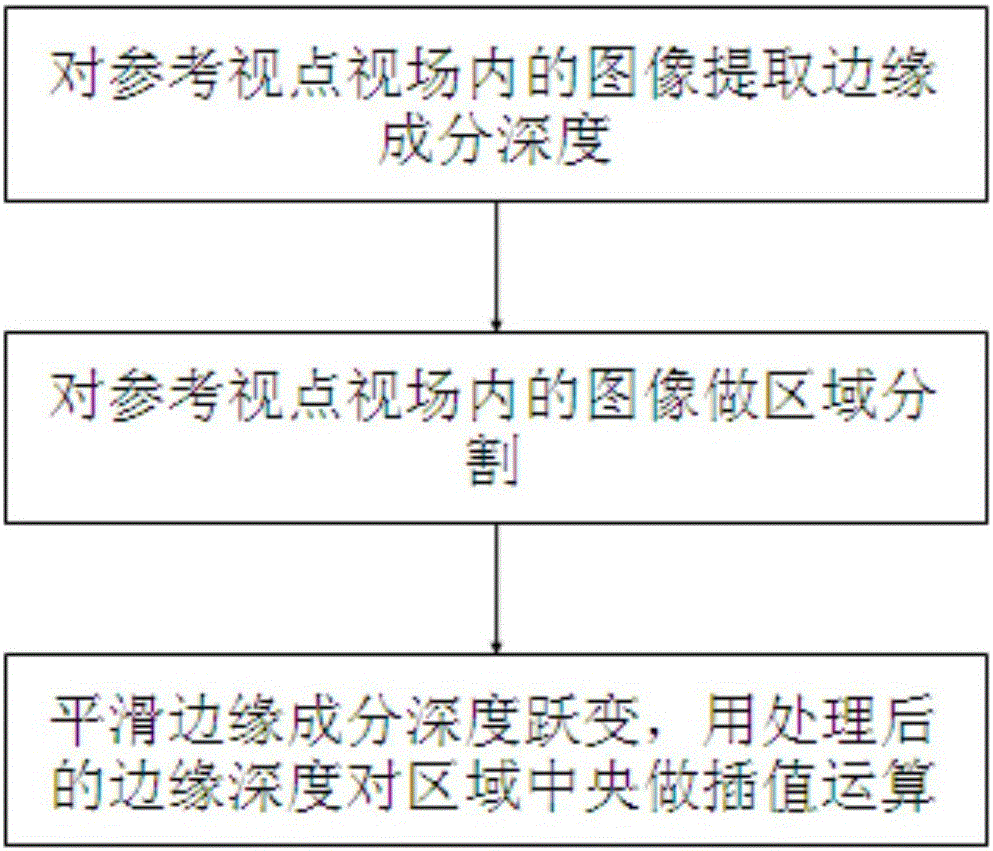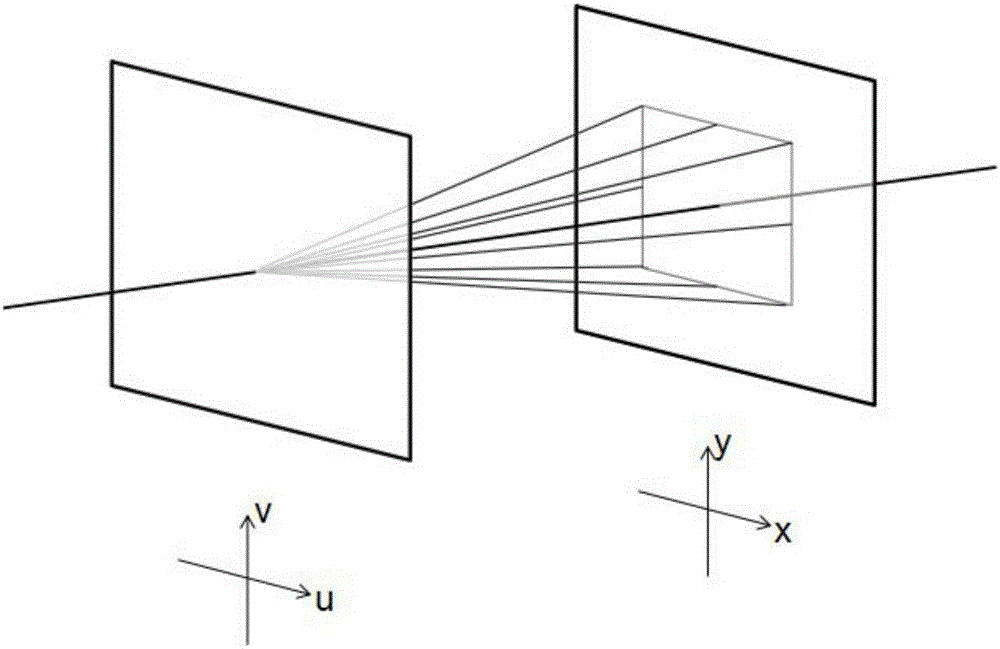Spatial depth extraction method based on light field information
A technique for spatial depth, extraction methods, used in computer vision and computational photography
- Summary
- Abstract
- Description
- Claims
- Application Information
AI Technical Summary
Problems solved by technology
Method used
Image
Examples
Embodiment Construction
[0034] The method of the present invention will now be described in detail in conjunction with specific embodiments and accompanying drawings.
[0035] like figure 1 As shown, the steps of spatial depth extraction based on light field information are as follows:
[0036] (1) Spatial depth calculation of image edge components at the reference viewpoint
[0037] The reference viewpoint for the selected 4D light field data. The information recorded by light field imaging is four-dimensional data, and its data recording principle is shown in Figure 2. For an image I(x,y), at different positions (x,y) of the image through different viewpoints (u,v) Recording, the four-dimensional light field data R(u, v, x, y) can be obtained, and R(u, v, x, y) is the light brightness of the point (u, v, x, y).
[0038] The present invention is not limited to the acquisition method of light field information, and the method of the present invention can realize the extraction of spatial depth for...
PUM
 Login to View More
Login to View More Abstract
Description
Claims
Application Information
 Login to View More
Login to View More - R&D
- Intellectual Property
- Life Sciences
- Materials
- Tech Scout
- Unparalleled Data Quality
- Higher Quality Content
- 60% Fewer Hallucinations
Browse by: Latest US Patents, China's latest patents, Technical Efficacy Thesaurus, Application Domain, Technology Topic, Popular Technical Reports.
© 2025 PatSnap. All rights reserved.Legal|Privacy policy|Modern Slavery Act Transparency Statement|Sitemap|About US| Contact US: help@patsnap.com



